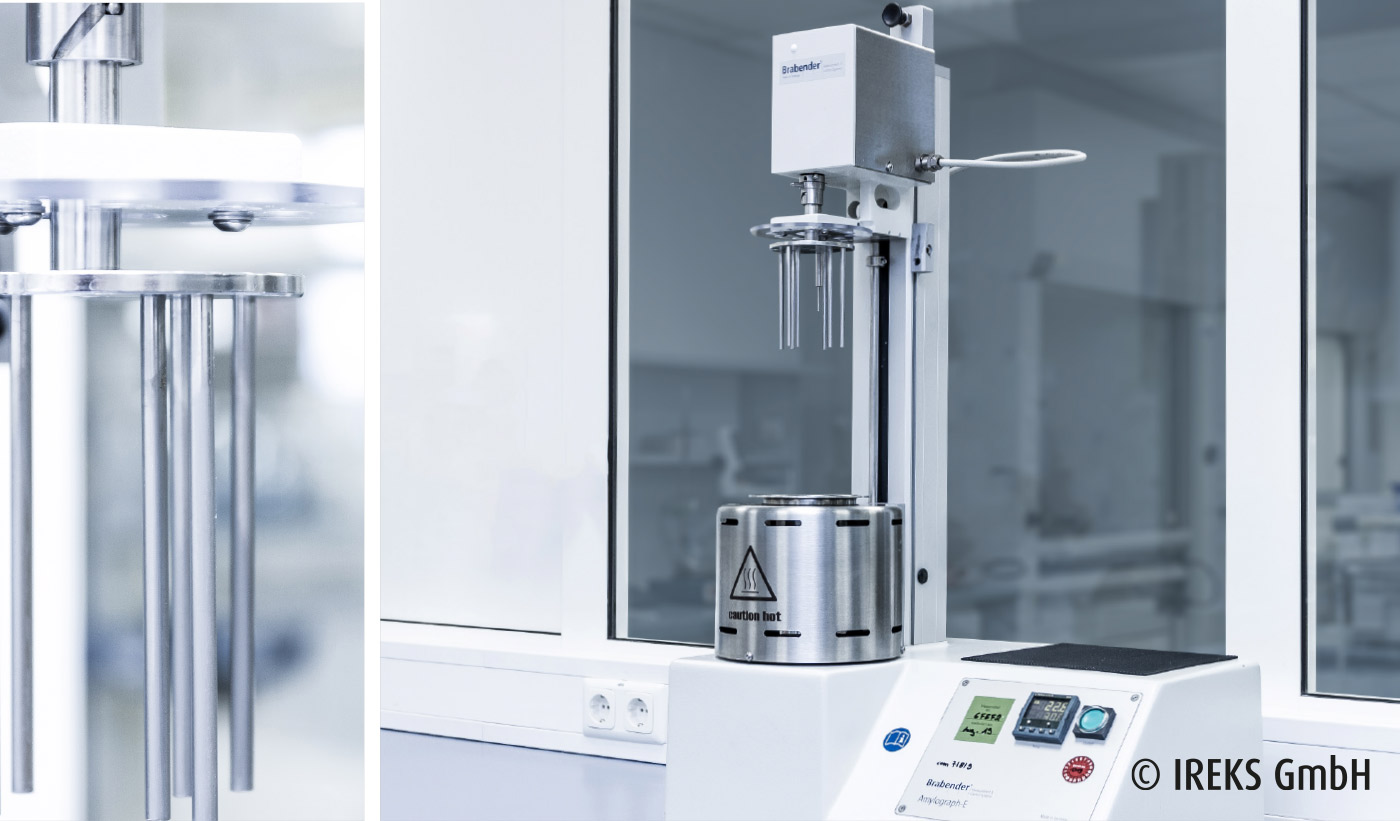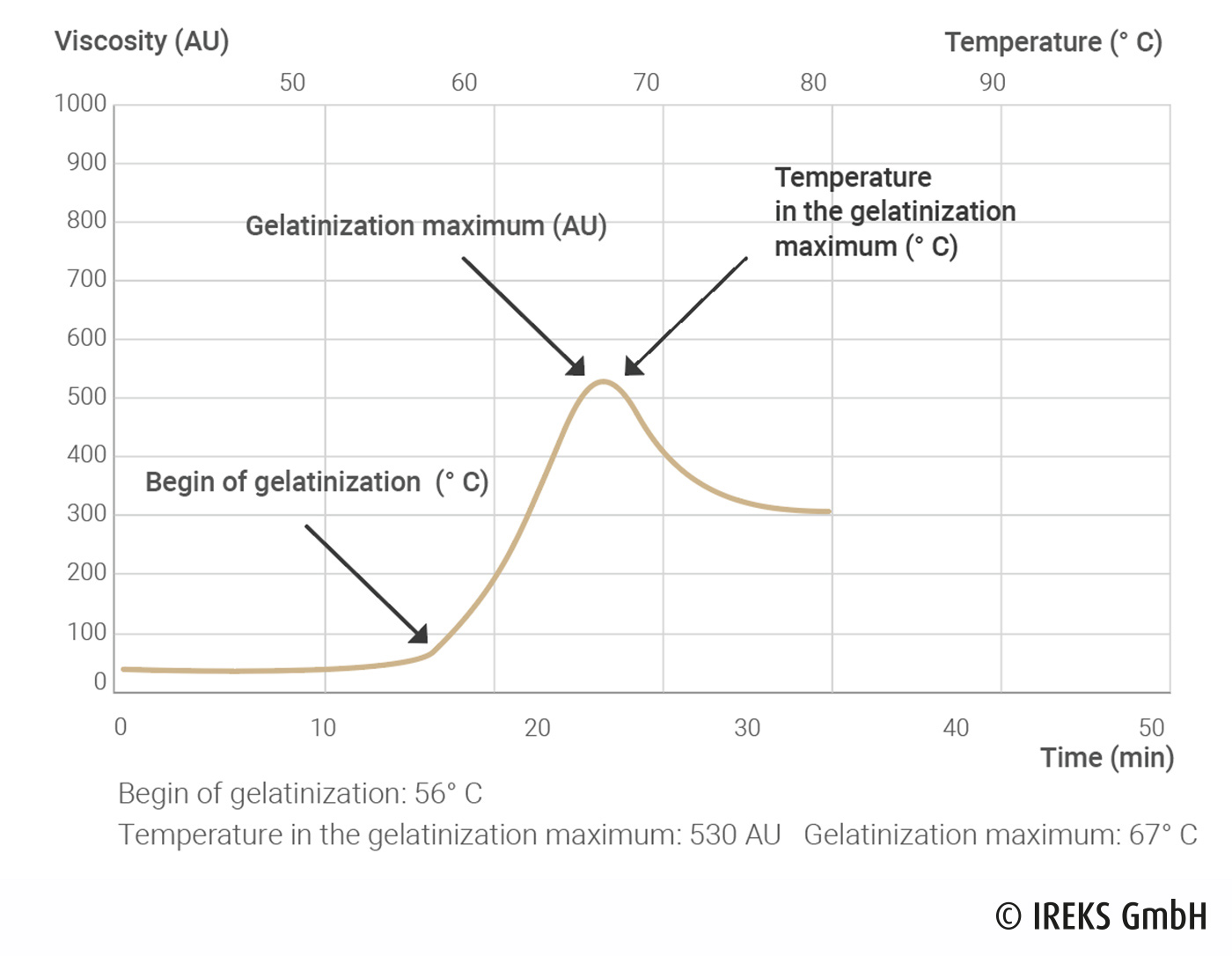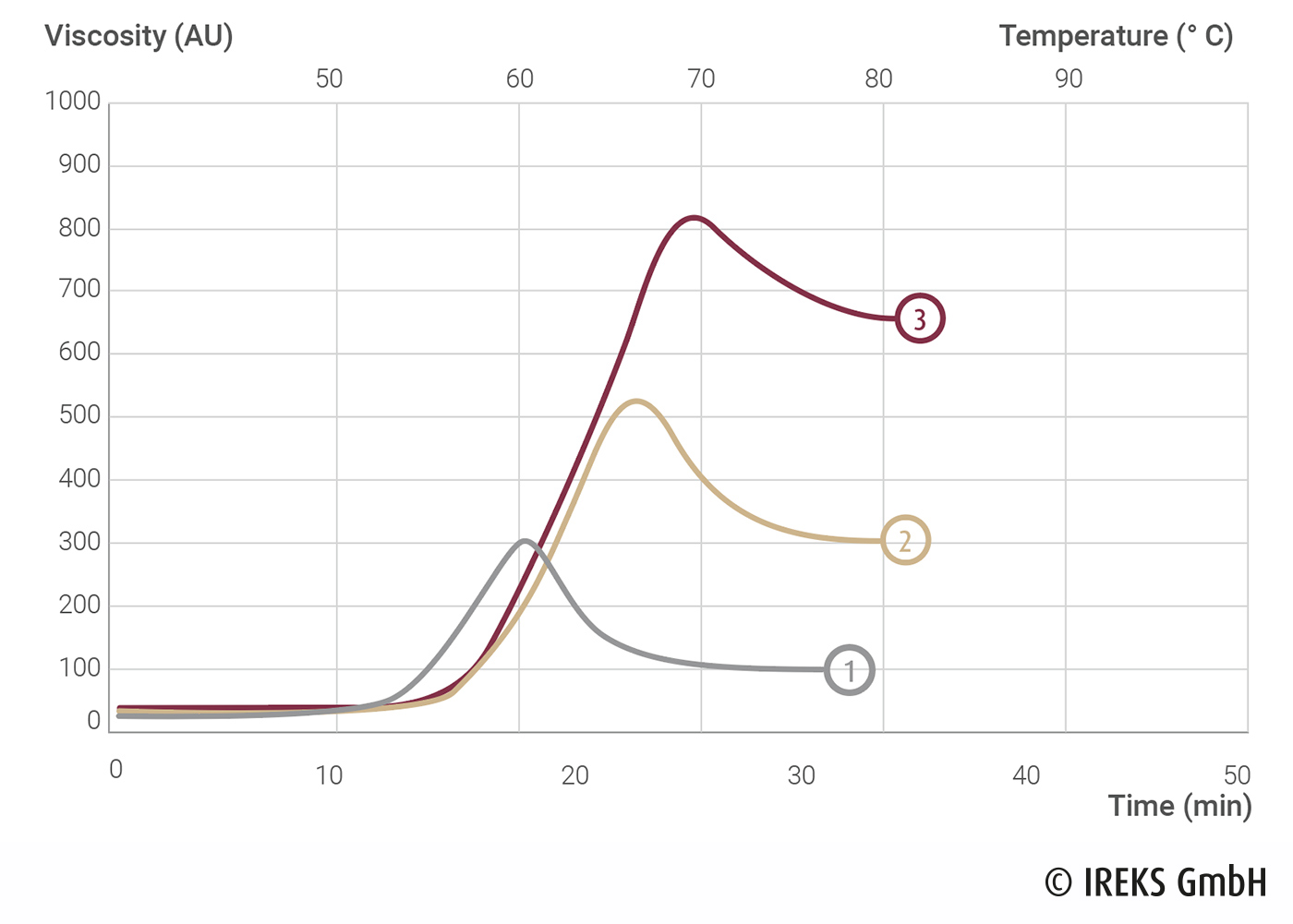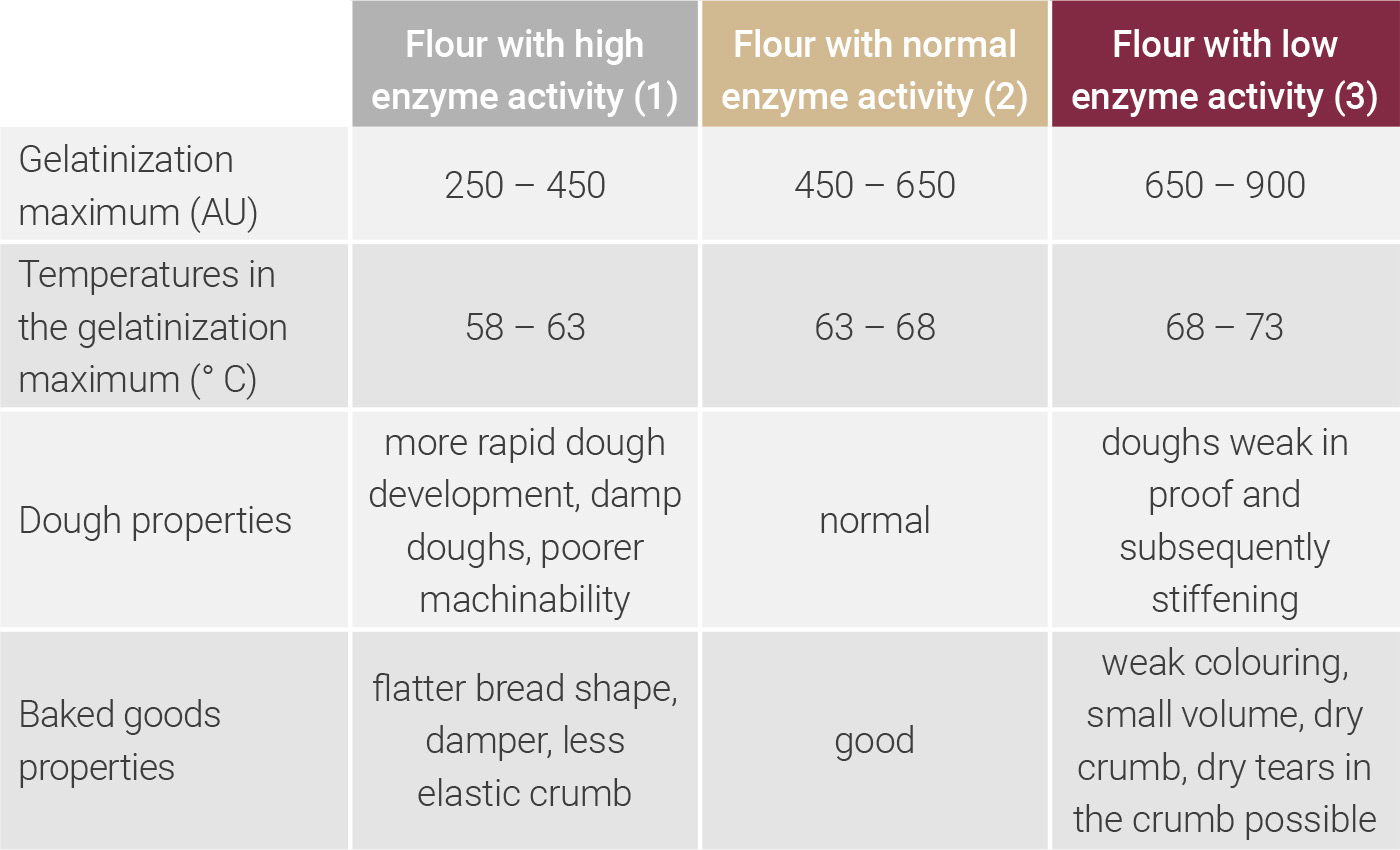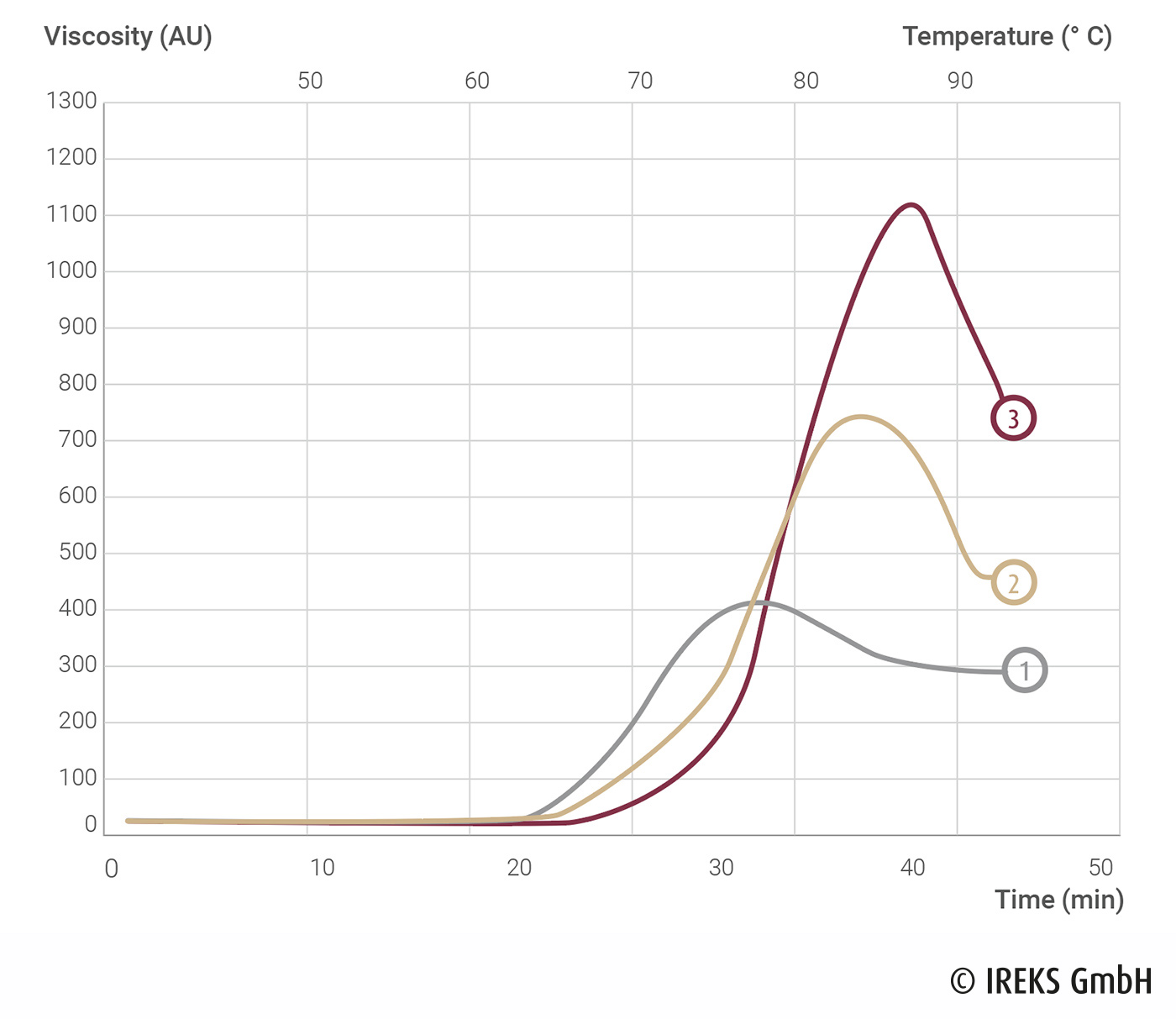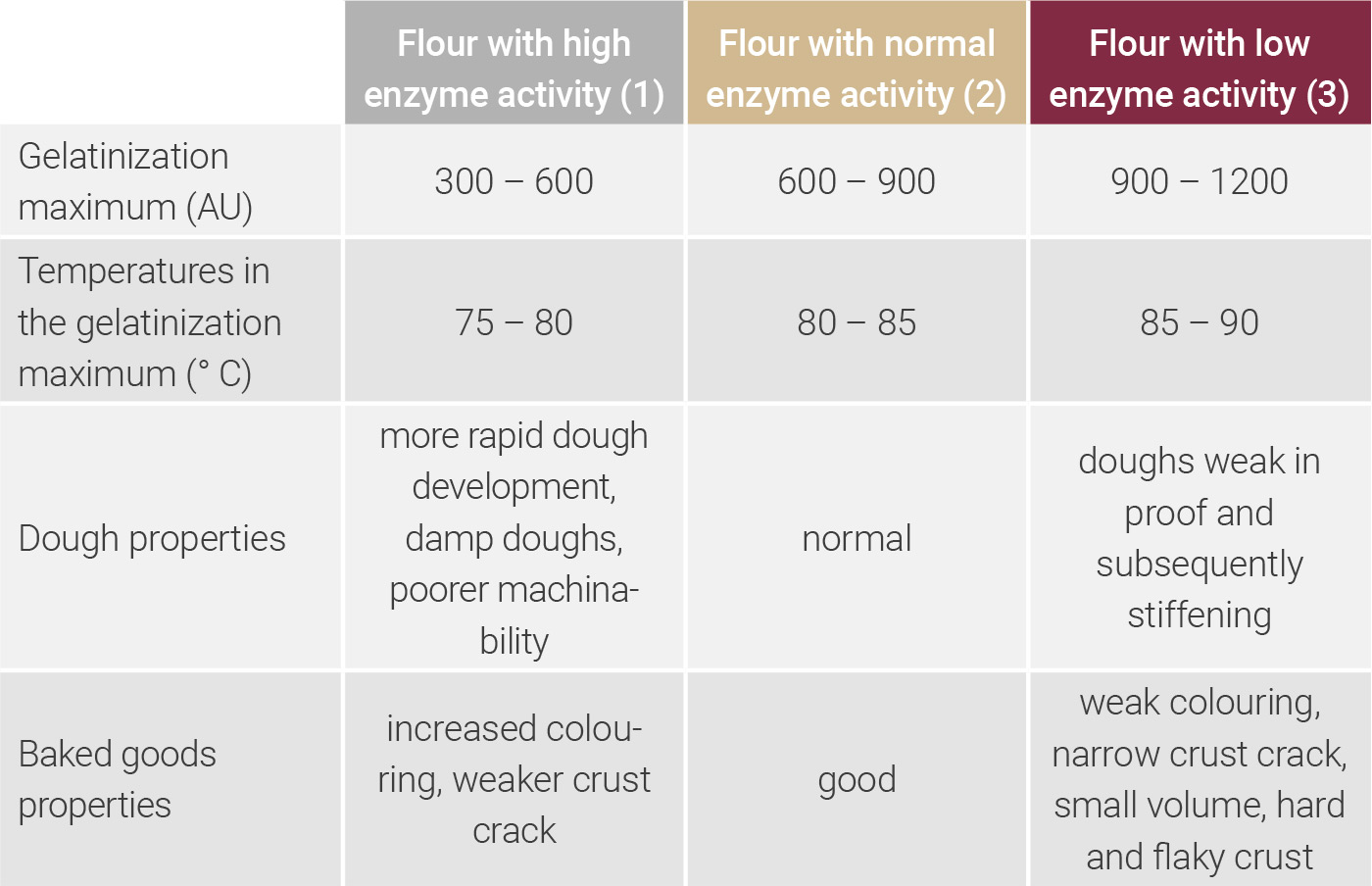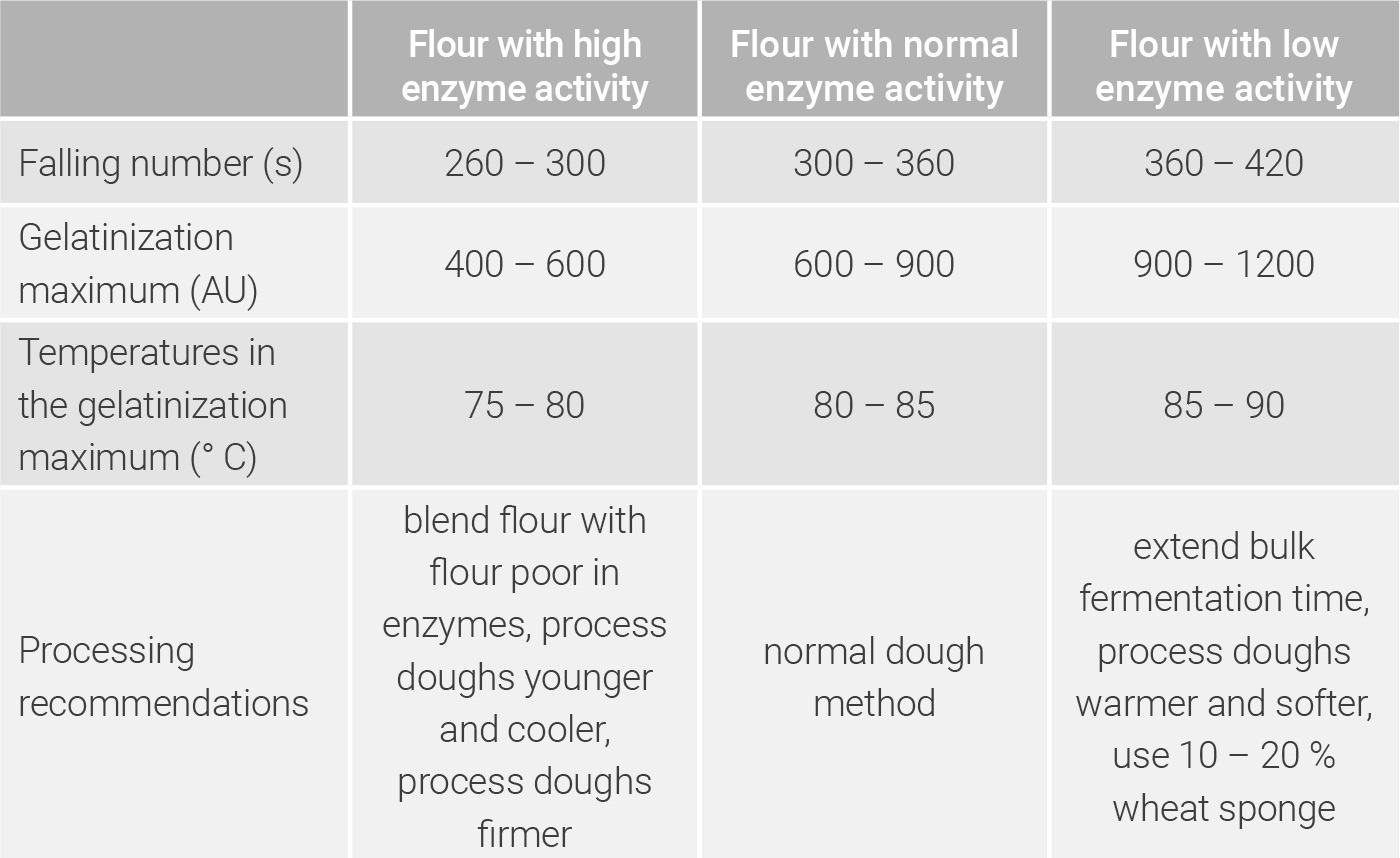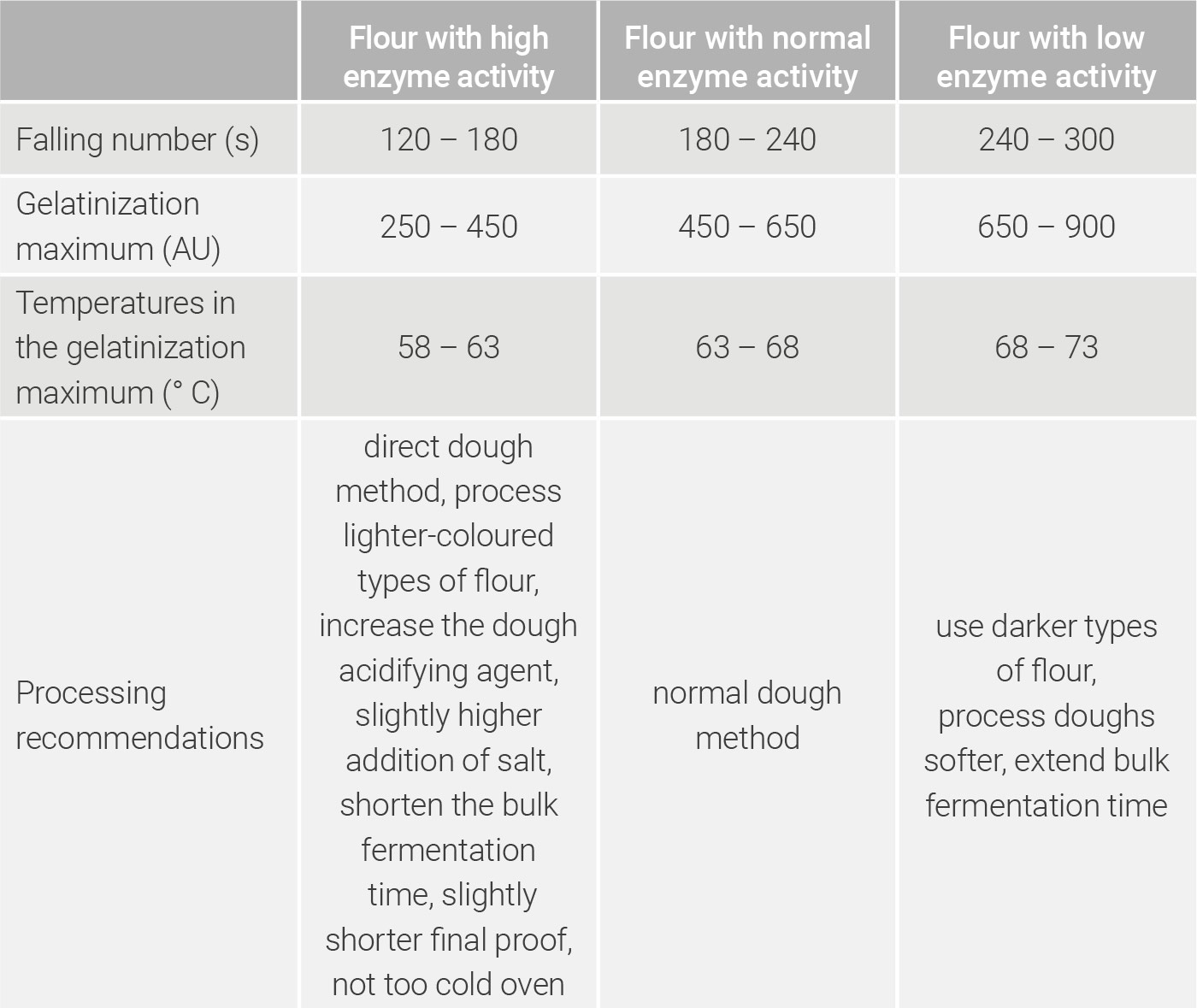With the help of the amylograph, the behaviour of a rye flour or a wheat flour during the baking process is simulated. With this method, a flour-water suspension (80 g flour with 450 ml water) is heated while being stirred continuously. Here, the temperature is raised by 1.5° C per minute until a temperature of 95° C is reached. During this process, the flour-water suspension gelatinizes and the firmness (viscosity) of the paste increases. The force which the paste requires as resistance to the mixing arm is recorded and shown in the form of a gelatinization curve, the so-called amylogram.
In the amylogram, the point of the greatest firmness (gelatinization maximum in amylograph units (AU)) of the paste as well as the relevant temperature (temperature in the gelatinization maximum) can be read. Furthermore, the temperature at the start of gelatinization can be ascertained.
Evaluation
The amylogram provides information on the starch consistency and the gelatinization behaviour of a flour. A low gelatinization maximum points to a stronger liquefaction of the starch and thus to a high α-amylase activity. Doughs from such flours have a sticky and damp upper surface and the baked goods made from these colour more strongly. Conversely, a very high gelatinization maximum is a sign of flours weak in enzymes and which bake dry. Doughs from such flours are weak in proof and the baked goods only have inadequate colouring.
In general, rye flours reach a low gelatinization maximum and they gelatinize sooner than wheat flours. This can be due to the comparatively higher enzyme activity in the case of rye flours. As a result of the swelling effect of the hemicellulose (pentosans) in the rye, a higher viscosity already appears at the beginning of measuring, before the actual gelatinization takes place. In illustration 2.32, three amylograms of different rye flour qualities are shown.
Table 2.19: Dough and baked goods properties of rye flour type 997 and 1150 depending on the gelatinization maximum and gelatinization temperature
In comparison to rye flours, wheat flours have significantly higher viscosities in the gelatinization maximum. Moreover, the temperature range of the gelatinization is higher than in the case of rye flours. Three amylograms of different wheat flour qualities are shown in illustration 2.33.

